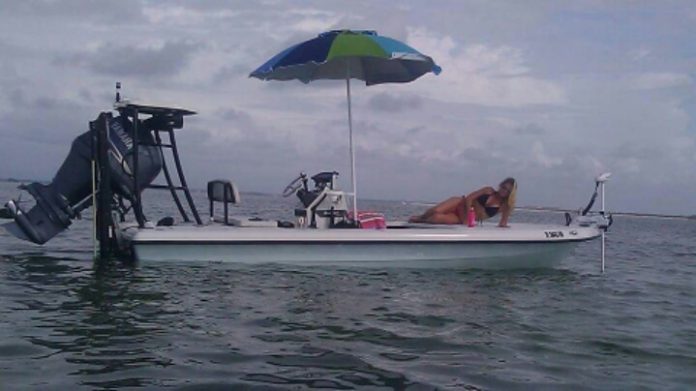Orlando Area and Mosquito Lagoon Fishing Forecast, February 2017

As winters go here in Central Florida, we certainly can’t complain about the great weather we’ve experienced thus far. With the exception of a few cold days, gorgeous fishing conditions have prevailed and we’ve experienced so excellent fishing as well.
Inshore on the flats, water levels have fallen to our winter lows, and water clarity has starting to clear up quite a bit. These low water levels force the redfish, black drum, and sea trout into the deeper pockets on the flats where they become trapped in some cases. These concentrations make for tight schools, but shallow conditions also make access both difficult and sometimes dangerous for those not familiar to the area. Also on colder days, falling water temperatures force most fish to seek deeper locations in search the warmest water they can find and they become very sluggish. As the sun warms the water, all it takes is a degree or two of change, and the fish will begin to move and feed in the shallows. On the sunny mornings, it is not uncommon to find redfish and trout holding in the sand pockets or potholes within the shallow flats where water temperatures raise faster. Additionally, warming water temperatures combined with sunny spring days and clear water make February one of the best months to sight fish for redfish, large sea trout, and black drum on the lagoon flats. Also, now is the time to target tailing black drum in the Banana River Lagoon “No Motor Zone”. For larger sea trout, fish at first light, sunset, or at night with natural baits, and target areas where mangrove edges, docks, and other structure are adjacent to deep water dredge holes, sloughs, or canals. These same areas will also hold concentrations of small trout which can be caught throughout the day on small jigs and shrimp imitation baits like DOA Shrimp fished very slowly along the bottom. Also, when fishing in deeper darker water try using nightglow colors.

Offshore, kingfish will be active along the inshore reefs and wrecks, and they will remain there as long as the water temperature stays above 68 degrees. When targeting kingfish this month focus your efforts on the areas of 8A Reef, Pelican Flats, and Bethel Shoals to the south for best results. Look for cobia and amberjack to be present on the inshore wrecks like the Carol Lee, Dutch, and Sub Wreck out of Port Canaveral. Additionally, live bait is tough to find this time of year, so always carry a box of frozen Spanish sardines (spinning minnows) with you as backup.
Near-shore, look for tripletail concentrations to improve greatly along the Port Canaveral buoy line and under floating weeds and structures, and for cobia to move in shadowing manta rays if the surface water temperatures reach the upper sixties. Now is also the time for shore fisherman to target pompano, bluefish, weakfish, small black drum, sheepshead, Spanish mackerel and whiting in the surf and larger redfish and flounder around the inlets and jetties.
The freshwater bite on the St. Johns River for crappie has been very good, with excellent catches of crappie and catfish being reported, but the American shad, sunshine and largemouth bass catches have not materialized in comparison to previous seasons. On the St Johns River water temperatures have been warmer this year (still in the 60’s), water levels are extremely low with little or no current. Hopefully the current cold snap will cool the water temps down and improve the influx of American shad, striped and sunshine bass.
WARNING: Flood waters from Hurricane Mathew have changed the locations of the sandy shoals, and boaters are finding the bottom in locations where the water was deeper last year. If you haven’t been to the river since Mathew, please use extra caution when operating your boat.
Last but not least, on those windy days in February it’s a great time to check out those freshwater fishing holes on the St Johns River. Currently American shad, speckled perch, warmouth perch, and largemouth bass are being reported. The shad run hasn’t really kicking in this year with the best catches being reported in the Mullet Lake stretch of the river. This past week, good reports of shad came from the Marina Isles to Mullet Lake section of the St. Johns River, as well as a good number shad being taken south of Lake Harney. As the shad run progresses they should be moving into the shallows flats south of Hwy 46 if you can clear the sand bar just south of the 46 bridge, so fly anglers don’t haste.
As always, if you have any questions or need information or would like to book a charter, please contact me.
Good luck and good fishing,
Captain Tom Van Horn
(407) 416-1187
- January 2021:Tom Van Horn - December 31, 2020
- December, Tom Van Horn - December 1, 2020
- Tom Van Horn:November - October 30, 2020











